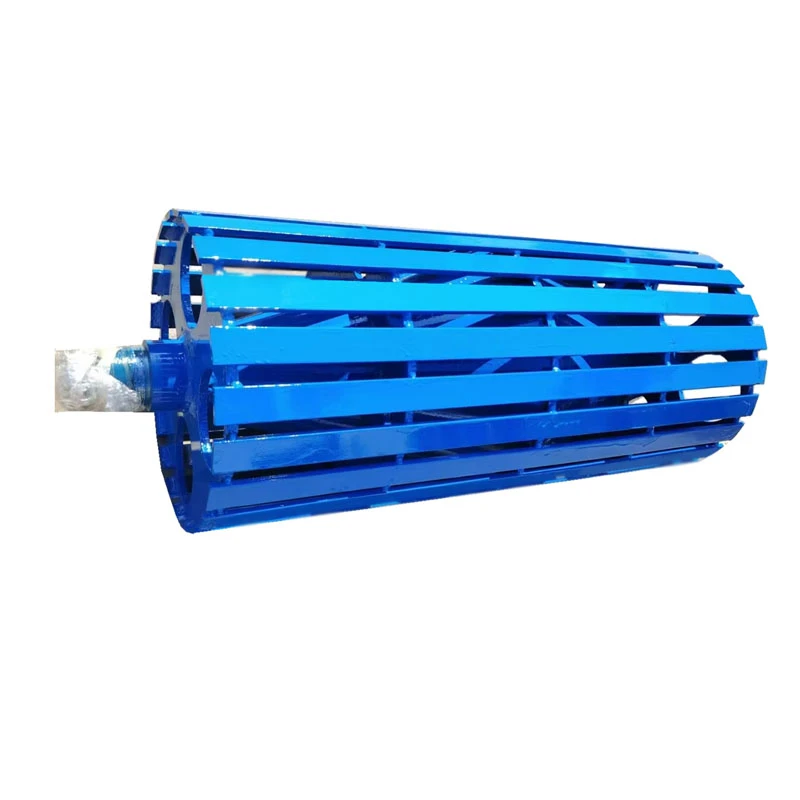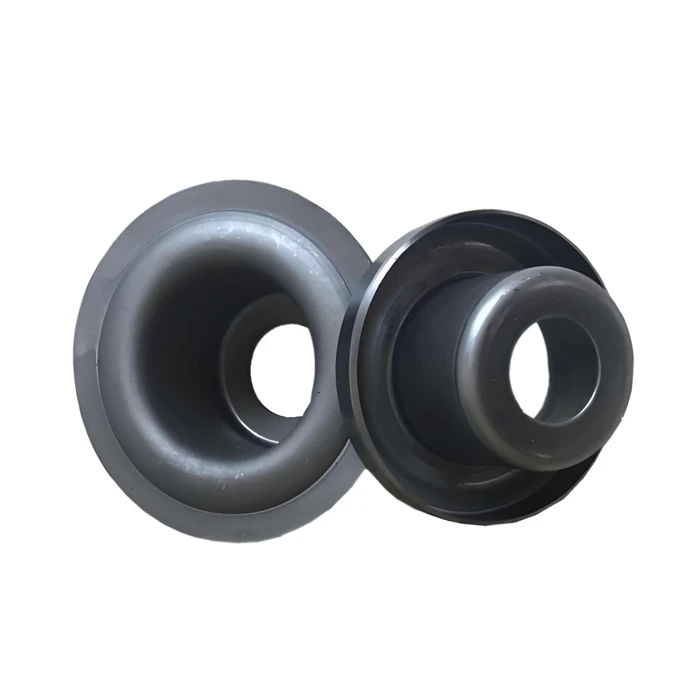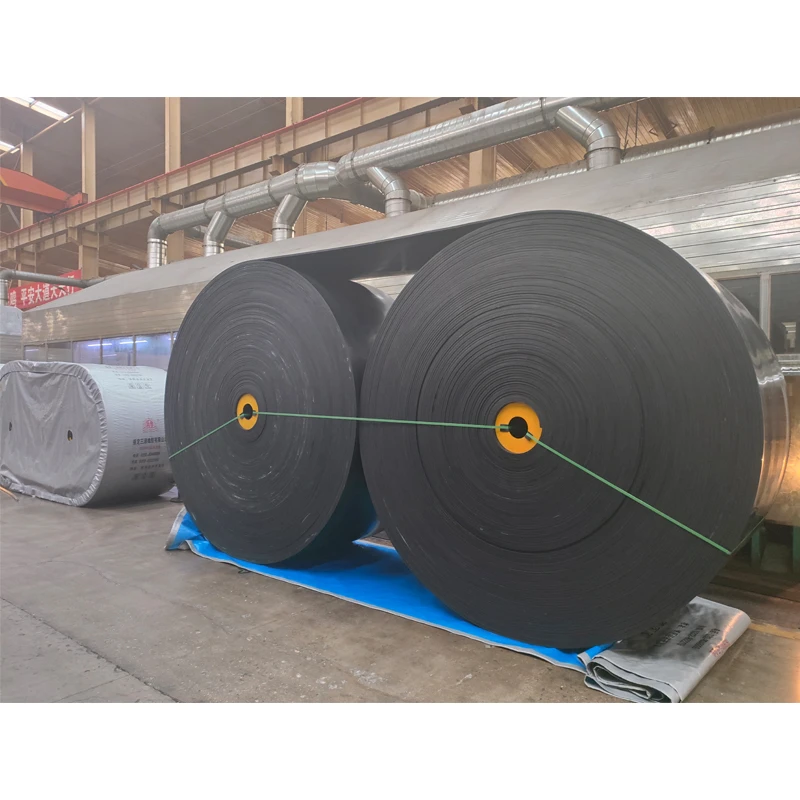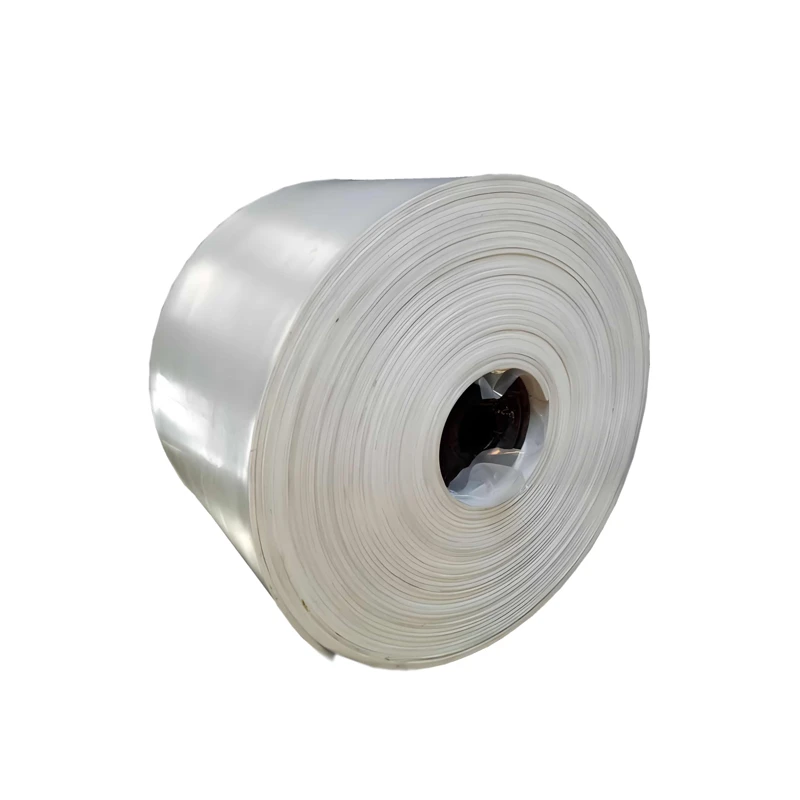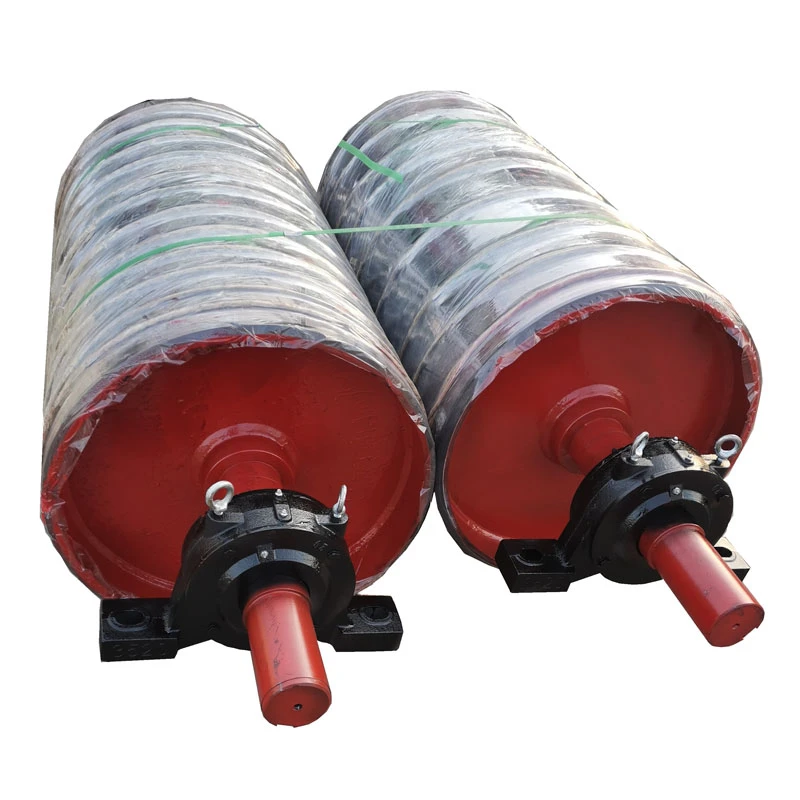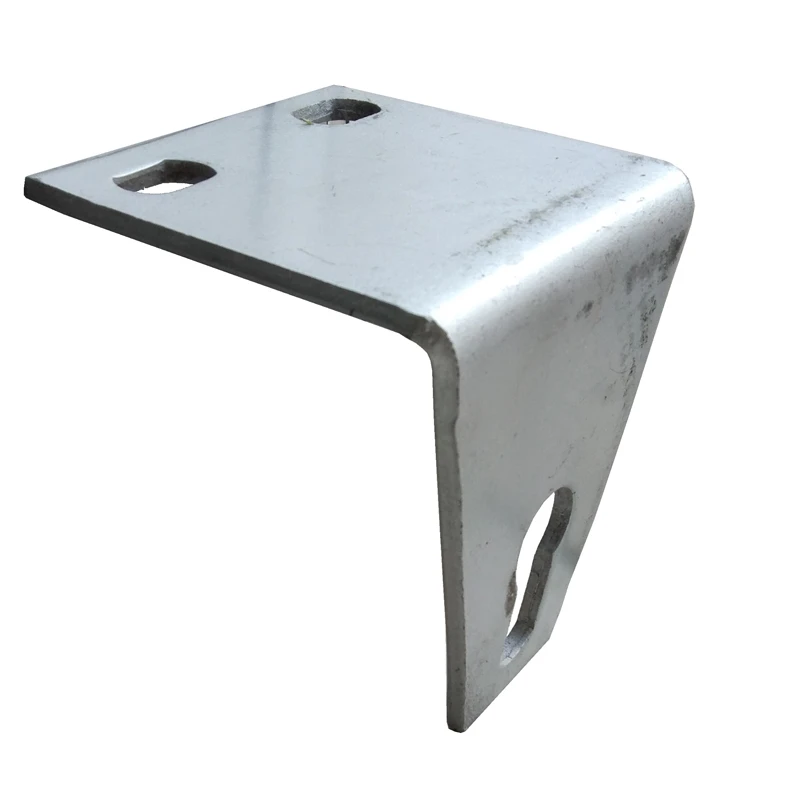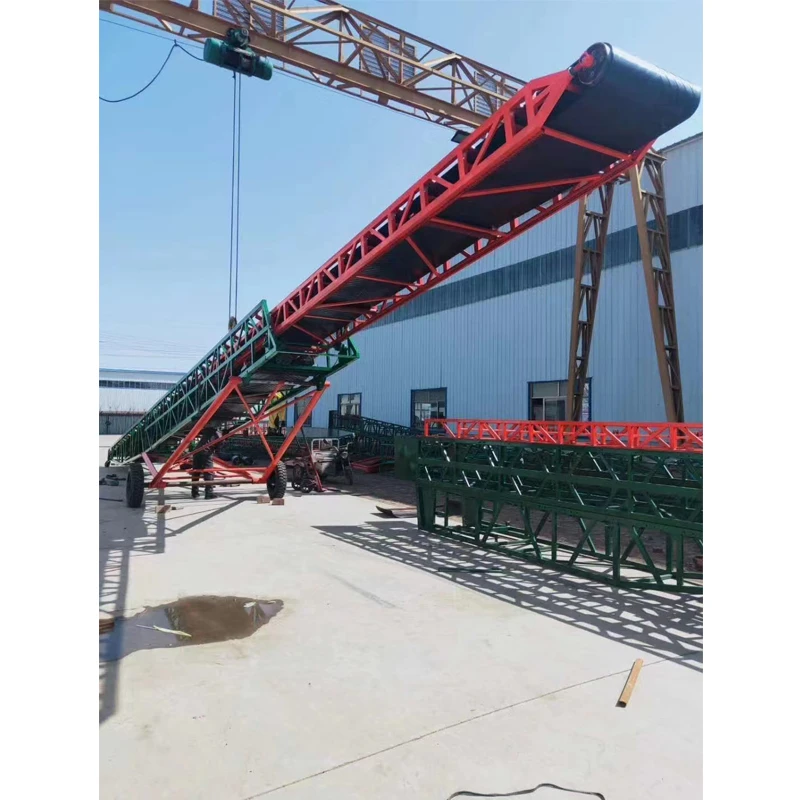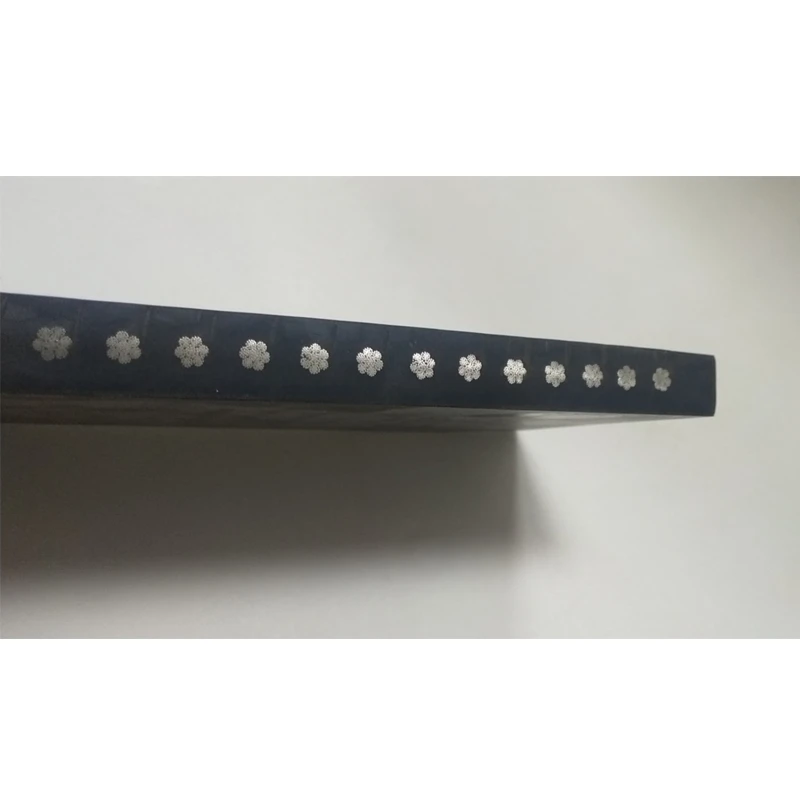Optimizing Material Flow: The Essential Role of Modern Conveyor Systems
In industrial and agricultural sectors, efficient material handling is paramount for operational success. Conveyor systems, particularly those designed for bulk materials like wood, play a critical role in streamlining logistics, reducing labor costs, and enhancing safety. The demand for robust and versatile conveyors is steadily increasing, driven by the need for higher throughput and reduced manual intervention in demanding environments. This comprehensive guide delves into the specifics of obtaining a high-quality wood conveyor for sale, exploring its technical nuances, application versatility, and the crucial factors that define a superior product from a trusted manufacturer.
Modern conveyor technology has evolved significantly, offering specialized solutions for diverse materials ranging from wood chips and sawdust to logs and processed timber. Companies seeking to enhance their operational efficiency, whether in sawmills, biomass power plants, or timber processing facilities, often look for advanced conveyor systems that promise durability, energy efficiency, and low maintenance. Understanding the underlying technology and manufacturing processes is key to making an informed investment.
Industry Trends and Market Dynamics in Conveyor Solutions
The material handling industry is experiencing robust growth, fueled by global industrialization and the increasing adoption of automation. Specifically, the market for bulk material handling equipment, including specialized systems like a wood conveyor for sale and a fertilizer conveyor for sale, is projected to grow at a Compound Annual Growth Rate (CAGR) of over 4.5% from 2023 to 2028, largely driven by the mining, agriculture, and construction sectors. This growth underscores the critical need for reliable and high-performance conveying solutions. Manufacturers are continually innovating to meet demands for greater energy efficiency, reduced noise, and enhanced safety features.
A significant trend is the increasing demand for mobile and modular conveyor systems, which offer unparalleled flexibility for various site conditions and operational requirements. These systems minimize the need for fixed infrastructure, allowing businesses to adapt quickly to changing material flow patterns or relocate equipment as needed. Another key trend is the integration of smart technologies, such as IoT sensors for predictive maintenance and real-time performance monitoring, optimizing uptime and operational costs. For example, a gravity roller conveyors for sale might incorporate sensor technology to manage package flow more efficiently without external power sources, providing an elegant solution for specific applications.
Technical Parameters: Key Specifications for a Robust Wood Conveyor
When evaluating a wood conveyor for sale, understanding its core technical specifications is crucial for matching the equipment to your specific operational needs. Key parameters define the conveyor's capacity, durability, and operational efficiency. Below is a table outlining typical specifications for a versatile mobile lifting conveyor suitable for wood and similar bulk materials. These parameters, such as "belt width" and "lift height," directly influence the conveyor's throughput and versatility. "Belt speed" dictates the rate at which material is moved, while "power (kW)" indicates the energy consumption and driving force of the system.
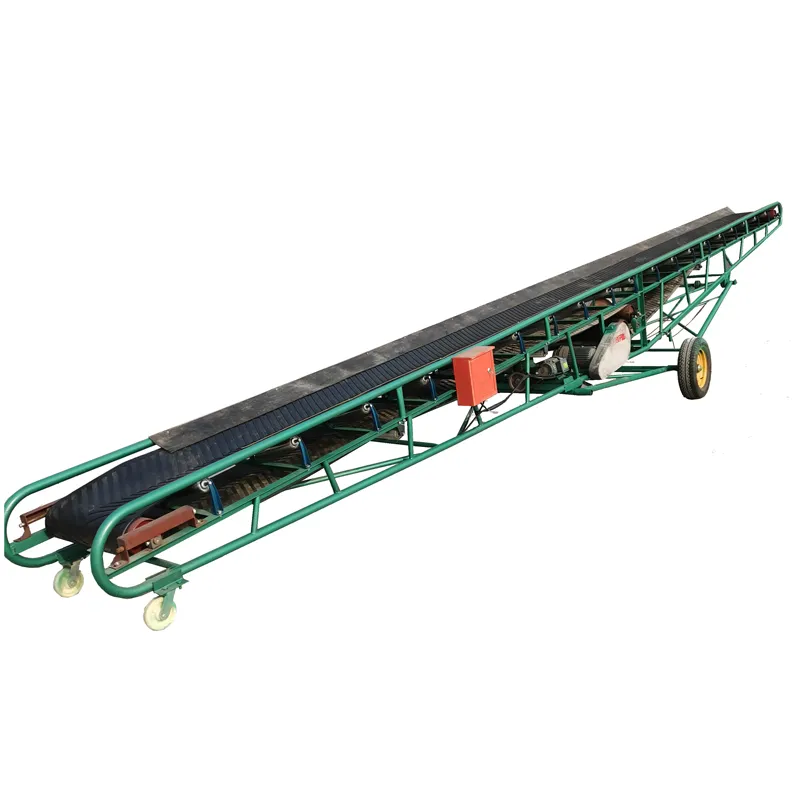
| Parameter | Description | Typical Range/Value |
|---|---|---|
| Model Name | Mobile Lifting Conveyor For Loading And Unloading | Varies by manufacturer, e.g., HGC-MLC Series |
| Belt Width | Width of the conveyor belt, influencing material capacity. | 400mm - 1200mm |
| Conveying Speed | Speed at which material is transported. | 0.5 - 2.5 m/s (Variable Speed Drive) |
| Adjustable Lift Height | The maximum and minimum height the conveyor can lift. | 2.5m - 6.5m (Hydraulic Lifting System) |
| Conveying Capacity | Throughput of material per hour. | 50 - 300 Tons/Hour |
| Motor Power | Power of the electric motor driving the belt. | 5.5 kW - 22 kW |
| Belt Material | Type of material used for the conveyor belt. | High-strength Rubber, PVC, or PU with cleated options |
| Frame Material | Material used for the conveyor's structural frame. | Carbon Steel (Powder Coated/Galvanized), Stainless Steel |
| Mobility | Ease of movement and relocation. | Wheeled chassis for portability |
These specifications are crucial for determining if a particular conveyor can handle your desired volume and type of wood material. For instance, a higher "adjustable lift height" makes the conveyor suitable for loading into tall silos or trucks, while "belt material" must be chosen based on abrasion resistance and specific environmental conditions. Understanding these values helps in selecting a system that offers both efficiency and longevity, thereby minimizing future operational expenditures.
Manufacturing Process: Precision and Durability in Every Wood Conveyor
The reliability and lifespan of a wood conveyor for sale are fundamentally determined by its manufacturing process and the quality of materials used. A reputable manufacturer adheres to stringent quality control standards, ensuring that each component meets or exceeds industry benchmarks. The process typically begins with the selection of high-grade raw materials, such as carbon steel (Q235/Q345 for structural components) or stainless steel (304/316 for enhanced corrosion resistance, particularly relevant for environments involving corrosive wood saps or chemicals).
Key manufacturing stages include precision cutting and forming using advanced CNC laser cutting and bending machines, ensuring exact dimensions for structural integrity. This is followed by robust welding techniques, often employing robotic welding for consistency and strength, especially for load-bearing frames and supports. Critical components like rollers, pulleys, and gearboxes undergo meticulous CNC machining to achieve tight tolerances, reducing friction and ensuring smooth operation. Surface treatments, such as powder coating or hot-dip galvanization, are applied to provide superior corrosion resistance and extend the equipment's lifespan, even in harsh outdoor conditions typical for a wood conveyor for sale.
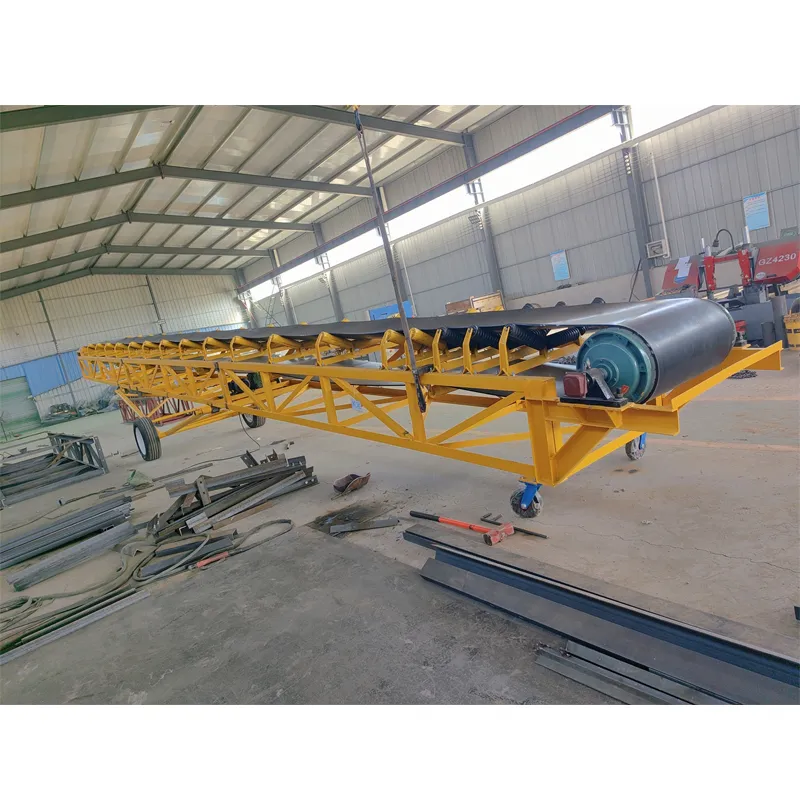
Rigorous quality inspection is performed at every stage, adhering to international standards like ISO 9001 for quality management systems and ANSI/CEMA (Conveyor Equipment Manufacturers Association) standards for design and safety. Final testing includes load capacity tests, operational speed checks, and safety feature validations to ensure the conveyor performs reliably under specified conditions. This comprehensive approach ensures that the finished product is not only efficient but also safe and durable, offering a long service life with minimal downtime.
Versatile Applications and Distinct Advantages
The applications for a reliable wood conveyor for sale are extensive, spanning various industries that handle bulk wood products. In the timber industry, these conveyors are indispensable for moving logs, lumber, wood chips, sawdust, and bark from processing areas to storage or loading docks. For biomass energy plants, they facilitate the efficient transport of biomass fuels like wood pellets or agricultural waste into boilers. Agricultural operations might utilize similar systems, such as a robust fertilizer conveyor for sale, to handle granular materials, demonstrating the cross-industry utility of these technologies.
The primary advantages of investing in a high-quality wood conveyor include significant operational cost reductions through automation and reduced manual labor. These systems enhance safety by minimizing human interaction with heavy or hazardous materials. Modern conveyors are designed for energy efficiency, often incorporating variable frequency drives (VFDs) that optimize motor speed and power consumption based on load, leading to substantial energy savings over time. Furthermore, robust construction with appropriate material selection, such as anti-corrosion treatments for the frame and high-abrasion-resistant belt materials, ensures longevity and reliable performance even in challenging environments like those found in petrochemical or metallurgical industries, where dust and corrosive elements are common.
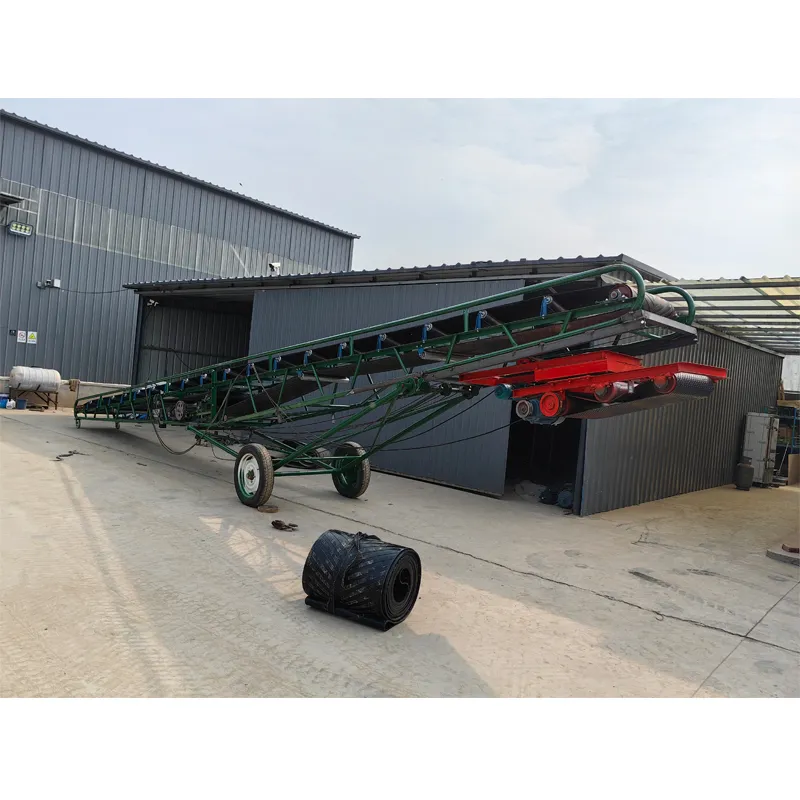
The mobile and lifting capabilities of solutions like the Mobile Lifting Conveyor For Loading And Unloading offer unparalleled flexibility. This design allows for quick deployment and repositioning, making it ideal for dynamic work sites or for multi-purpose use across different areas of a facility. This adaptability ensures that operations can maintain high levels of efficiency and responsiveness, minimizing bottlenecks and maximizing output, which is crucial for maintaining a competitive edge in fast-paced industries.
Manufacturer Comparison and Tailored Solutions
Choosing the right manufacturer for a wood conveyor for sale is a critical decision that impacts long-term operational success. Key factors to consider include the manufacturer's experience in the bulk material handling sector, their technological capabilities, and their commitment to customer support. A manufacturer with a decade or more of specialized experience typically possesses deeper insights into common industry challenges and can offer more robust, proven solutions. Look for companies that emphasize R&D and continuous product improvement.
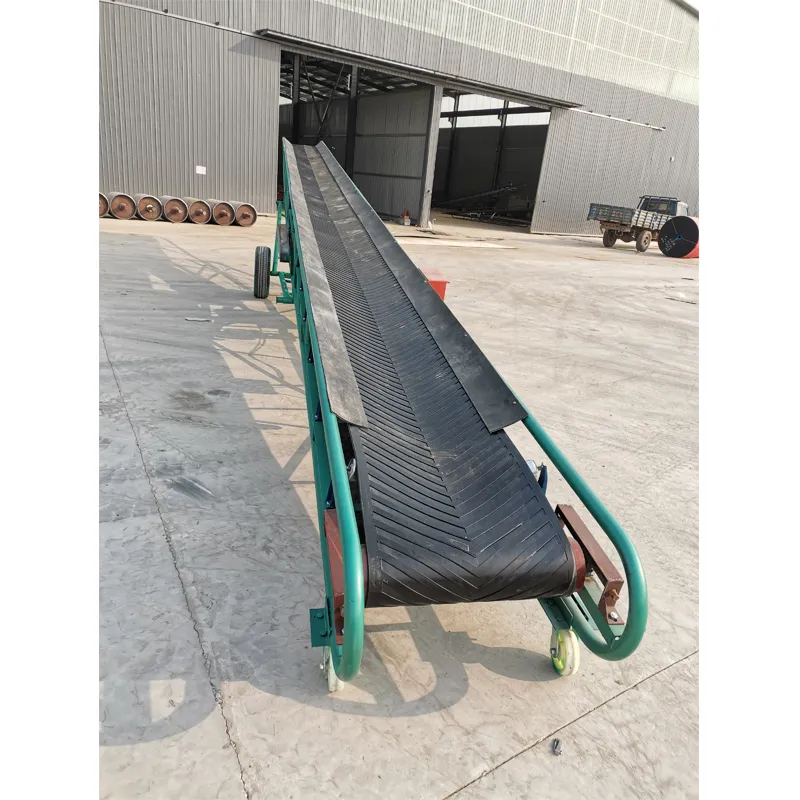
Customization is another vital aspect. While standard models are available, many industrial applications require tailored solutions to meet specific throughput requirements, material characteristics (e.g., wet vs. dry wood chips), spatial constraints, or integration with existing machinery. A reputable manufacturer should offer comprehensive customization services, including detailed engineering assessments, 3D modeling, and the ability to incorporate specific features such as specialized belt designs (e.g., chevron belts for inclines), dust suppression systems, or integrated weighing scales. This level of service ensures that the conveyor system seamlessly integrates into your existing workflow, maximizing efficiency and return on investment.
When comparing manufacturers, request detailed specifications, case studies, and customer references. Inquire about their production facilities, quality certifications (e.g., ISO 9001), and after-sales support infrastructure. A transparent and responsive manufacturer committed to long-term partnerships is often the best choice for ensuring the optimal performance and longevity of your material handling equipment.
Real-World Application Cases & Customer Success
The practical effectiveness of a wood conveyor for sale is best illustrated through its successful deployment in real-world scenarios. Consider a large sawmill operation that previously relied on a fleet of forklifts for moving wood chips from chippers to storage silos. This method was labor-intensive, consumed significant fuel, and posed safety risks. By implementing a customized Mobile Lifting Conveyor For Loading And Unloading system, the sawmill drastically reduced its operational costs by 40% and improved its material transfer rate by 25%. The mobile nature of the conveyor allowed them to serve multiple chipping lines and load various trucks or storage facilities efficiently.
In another instance, a biomass power plant required a versatile solution for feeding different types of biomass fuels, including wood waste and agricultural residues, into their combustion chambers. A standard fixed conveyor would not offer the necessary flexibility. They opted for a high-capacity mobile and adjustable conveyor, which could be quickly positioned to receive material from diverse delivery points and adjust its discharge height to accommodate different hopper inlets. This solution not only optimized their fuel handling process but also contributed to a consistent and reliable energy supply, significantly enhancing the plant's operational efficiency.
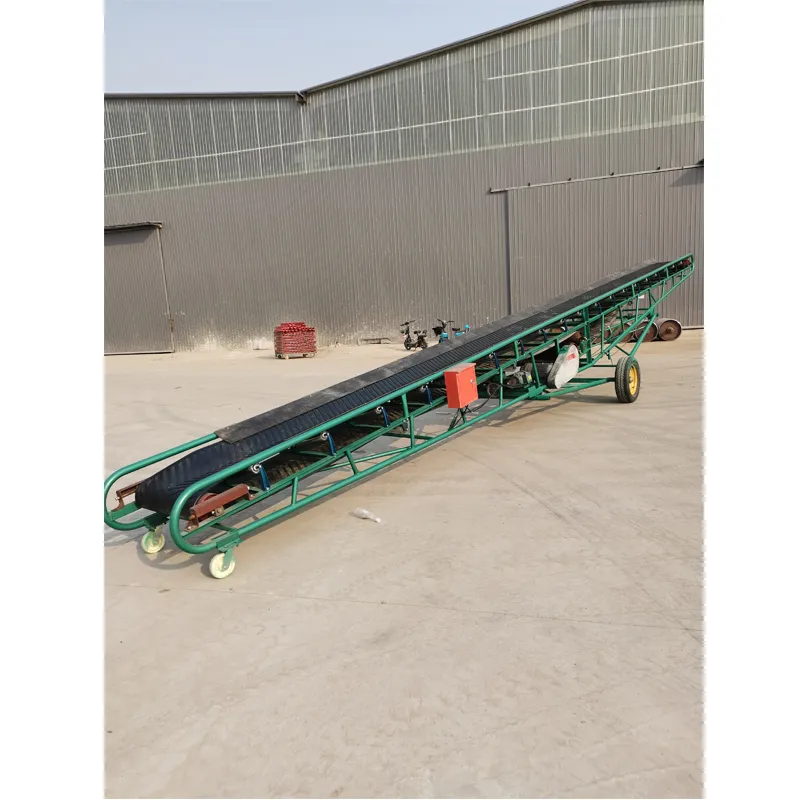
Customer feedback consistently highlights improved safety, reduced energy consumption, and enhanced throughput as key benefits. One client noted, "The new wood conveyor for sale has transformed our loading operations. It's incredibly reliable and the ability to adjust the height on the fly saves us hours every day, directly impacting our bottom line." These testimonials underscore the tangible advantages that well-engineered conveyor systems bring to industrial and agricultural operations.
Frequently Asked Questions (FAQ)
Q1: What types of wood materials can these conveyors handle?
Our conveyors are designed to handle a wide range of wood-based materials, including wood chips, sawdust, bark, wood pellets, shredded wood waste, and even small logs or processed timber pieces. The specific design, such as belt type (e.g., flat, troughed, cleated) and belt width, can be optimized for the specific material's characteristics, whether it’s fine particles or irregularly shaped chunks. This versatility ensures that a single wood conveyor for sale can meet diverse handling needs within timber processing, biomass energy, or related industries.
Q2: What is the typical delivery period for a custom wood conveyor?
The delivery period for a custom wood conveyor for sale can vary based on complexity and current production schedules. Generally, for standard configurations, lead times range from 4 to 8 weeks from order confirmation. For highly customized solutions involving unique design or specialized components, this period might extend to 10-14 weeks. We prioritize clear communication, providing estimated delivery dates and regular updates throughout the manufacturing process to ensure transparency and timely project completion.
Q3: What kind of warranty and after-sales support do you offer?
We typically offer a standard 12-month warranty on mechanical components and a 6-month warranty on electrical components, covering manufacturing defects. Our commitment extends beyond the sale with comprehensive after-sales support, including remote technical assistance, readily available spare parts, and optional on-site maintenance services. We understand that downtime can be costly, so our support team is dedicated to providing prompt and effective solutions to keep your wood conveyor for sale operating at peak efficiency.
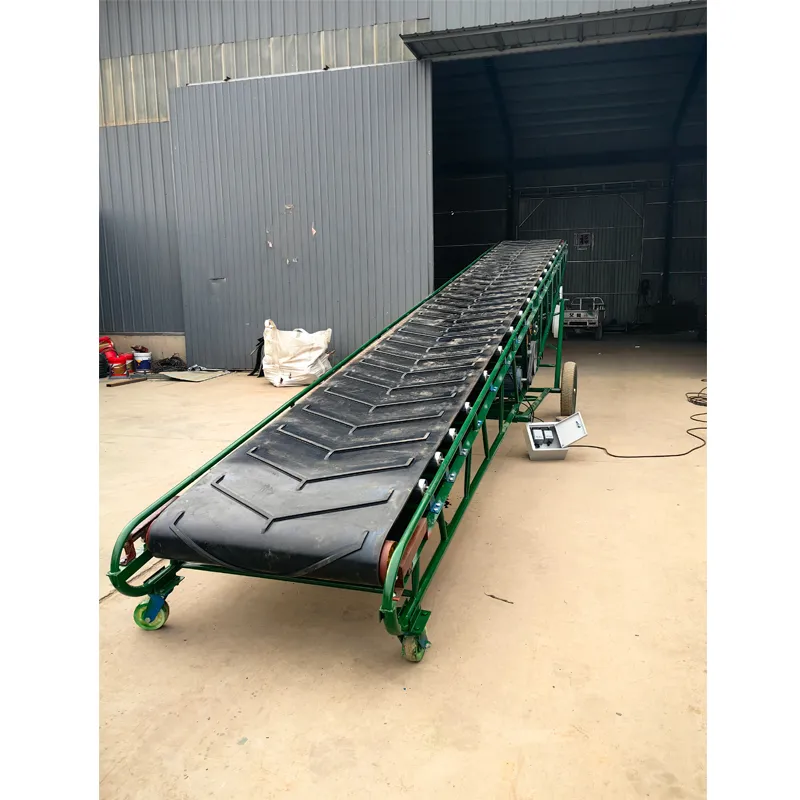
Why Choose Our Mobile Lifting Conveyor for Your Operations?
When considering a wood conveyor for sale, the Mobile Lifting Conveyor For Loading And Unloading stands out as a superior solution due to its blend of mobility, adjustability, and robust construction. Designed for high-volume loading and unloading, this system significantly reduces operational bottlenecks and improves safety by automating strenuous manual tasks. Its hydraulic lifting mechanism provides unparalleled flexibility in discharge height, making it compatible with various receiving bins, trucks, or processing equipment, thereby eliminating the need for multiple fixed conveyors or manual material handling.
The inclusion of a high-strength rubber belt, often with customizable cleated patterns, ensures effective material grip and minimizes spillage, even when conveying at steep angles. The heavy-duty steel frame, treated with advanced anti-corrosion coatings, guarantees exceptional durability and a long operational lifespan, even in challenging outdoor or industrial environments. Furthermore, the intuitive control panel and safety features ensure ease of use and maximum operator safety, making this mobile conveyor an intelligent investment for any business aiming to optimize its wood material handling logistics and enhance overall productivity.
References
- Conveyor Equipment Manufacturers Association (CEMA). (2018). _Belt Conveyors for Bulk Materials_ (8th ed.).
- International Organization for Standardization (ISO). (2015). _ISO 9001:2015 Quality management systems — Requirements_.
- U.S. Department of Energy. (2020). _Energy Efficiency in Material Handling_.
- Grand View Research. (2023). _Bulk Material Handling Equipment Market Size, Share & Trends Analysis Report_.
- Forest Products Journal. (2022). _Advances in Wood Biomass Handling Systems_.

